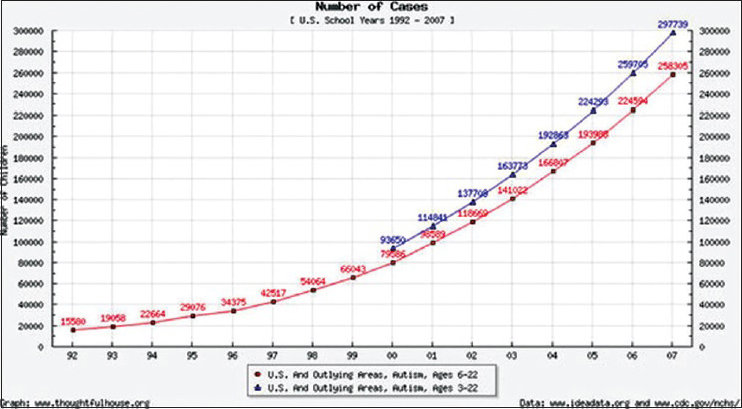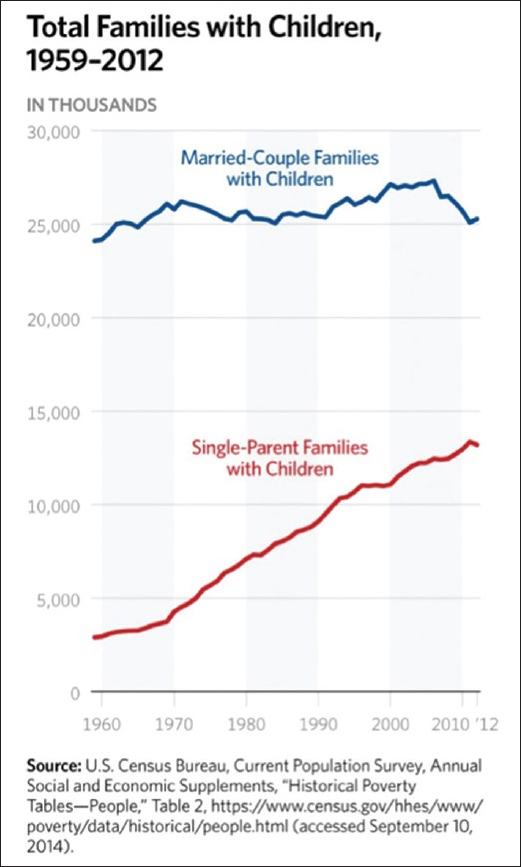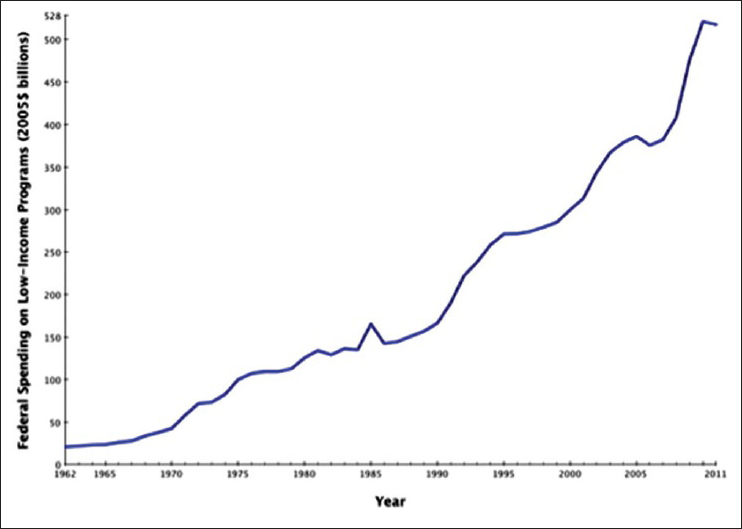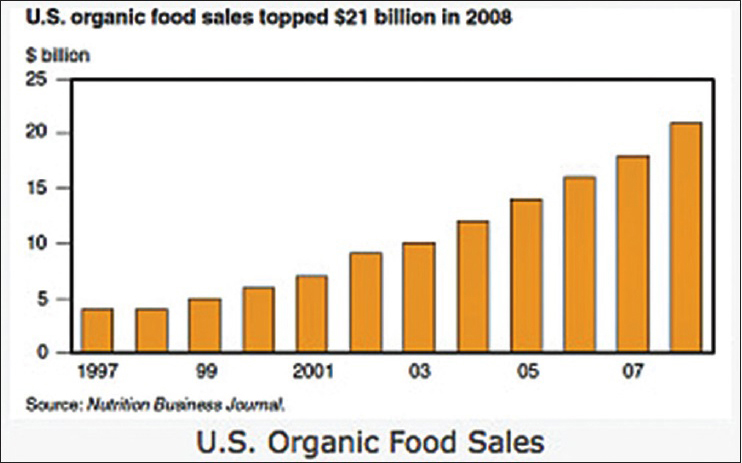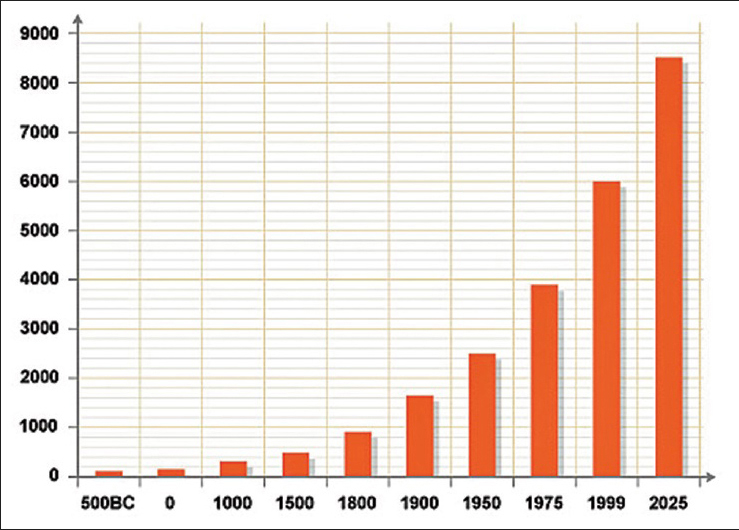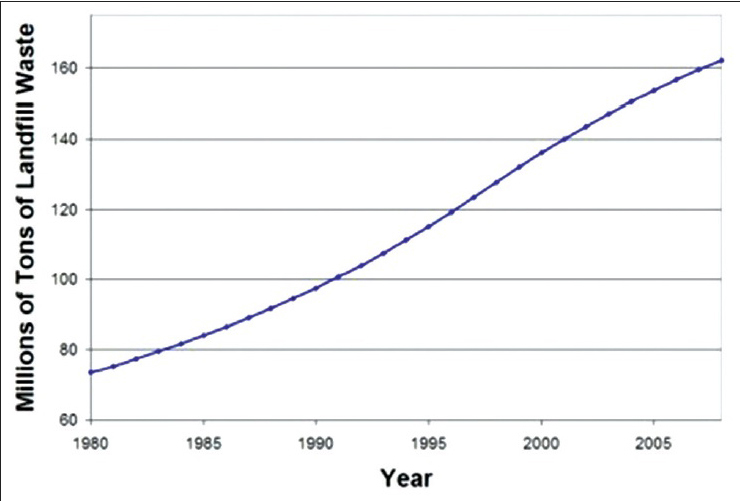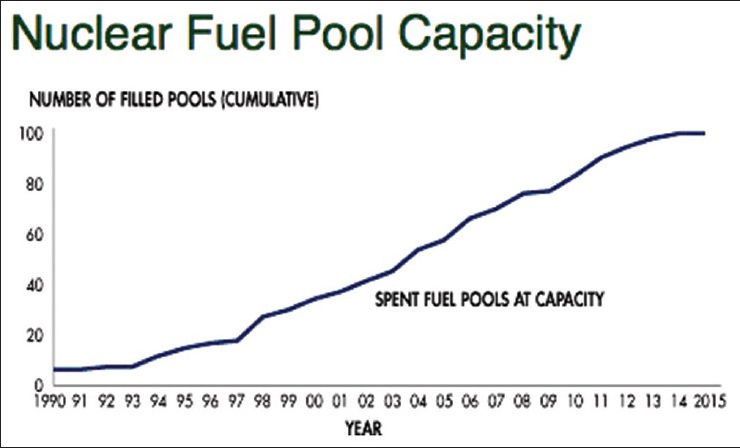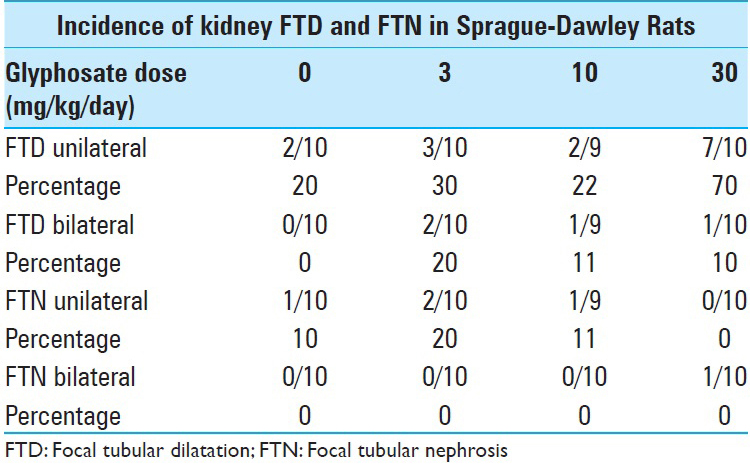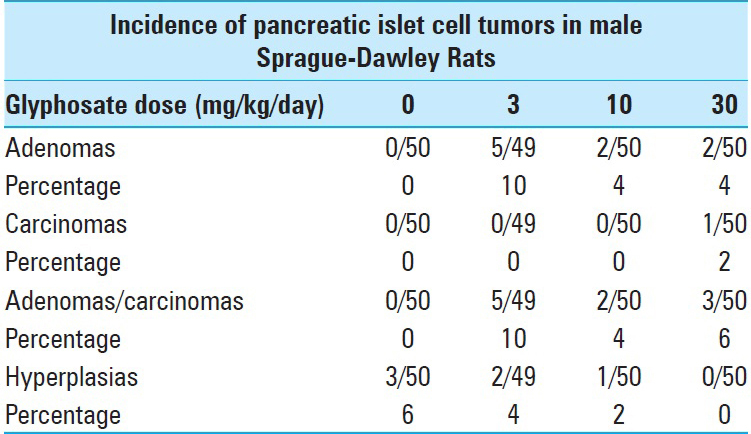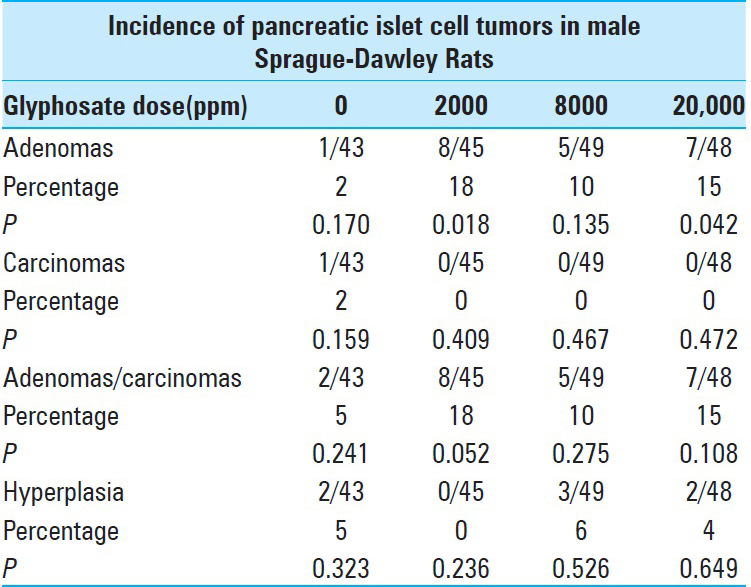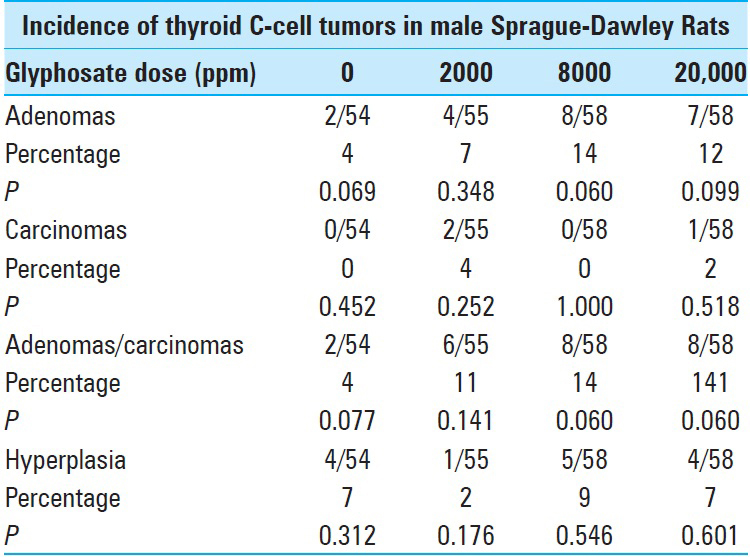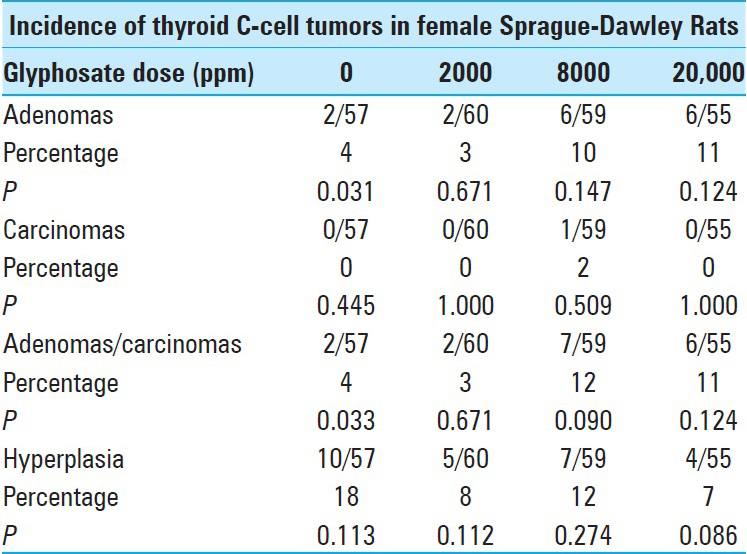- Clinical Professor of Neurosurgery (ret.) and Adjunct Professor of Medical History (ret.), Mercer University School of Medicine; President, www.haciendapub.com, Macon, Georgia, USA
Correspondence Address:
Miguel A. Faria
Clinical Professor of Neurosurgery (ret.) and Adjunct Professor of Medical History (ret.), Mercer University School of Medicine; President, www.haciendapub.com, Macon, Georgia, USA
DOI:10.4103/2152-7806.162550
Copyright: © 2015 Faria MA. This is an open-access article distributed under the terms of the Creative Commons Attribution License, which permits unrestricted use, distribution, and reproduction in any medium, provided the original author and source are credited.How to cite this article: Miguel A. Faria. Glyphosate, neurological diseases – and the scientific method. 10-Aug-2015;6:132
How to cite this URL: Miguel A. Faria. Glyphosate, neurological diseases – and the scientific method. 10-Aug-2015;6:132. Available from: http://surgicalneurologyint.com/surgicalint_articles/glyphosate-neurological-diseases-and-the-scientific-method-2/
Keywords: Glyphosate, herbicide, manganese, neurological diseases, science, scientific method
We must be careful not to rush to label glyphosate as excessively toxic to humans because when used properly and in proper quantities it is probably no more dangerous and toxic than other effective herbicides on the market. Unfortunately, most effective herbicides and insecticides could be classified as neurotoxic and carcinogenic because in high enough concentrations they can be toxic to biological systems. In their lengthy treatise, “Glyphosate, pathways to modern diseases III: Manganese (Mn), neurological diseases, and associated pathologies” recently published in Surgical Neurology International, Drs. Samsel and Seneff blame the widely used herbicide glyphosate for a number of ecological as well as medical disorders via Mn metabolism and a myriad of other pathophysiological mechanisms.[
The massive weight of unconnected data presented by Drs. Samsel and Seneff in this paper fails to establish a definite association with glyphosate usage or Mn metabolism to autism or any of the other conditions implicated.[
Investigators must be wary of the various traps that befall epidemiological, population-based studies. First, for example, is the post-hoc, ergo propter hoc (“after this, therefore because of it”) fallacy. In other words, does a high level of a toxic substance cause a disease, or does it merely accumulate as the result of the disease or some other process? Was the high use of glyphosate noted to precede the increase in the number of cases of autism, Parkinson's disease (PD), cholestasis, and Alzheimer's disease (AD), etc., really responsible for those conditions? I think not, by the evidence provided by the authors. True, the authors have done a phenomenal amount of work and collected an impressive bibliography, but this of itself does not prove a cause and effect relationship.
The assertion, “(glyphosate) usage has increased steadily. In step with the rise in autism rates,”[
Drs. Samsel and Seneff state: “Many diseases and conditions are currently on the rise in step with glyphosate usage in agriculture, particularly on genetically-modified (GM) crops of corn and soy. These include autism, AD, PD, anxiety disorder, osteoporosis, inflammatory bowel disease, renal lithiasis, osteomalacia, cholestasis, thyroid dysfunction, and infertility.”[
Any association between glyphosate and most of the conditions listed by Drs. Samsel and Seneff are doubtful with the evidence provided, and yet there is a statistical correlation in that they are all increasing, but this again does not establish a cause and effect relationship. We should wait for the science. How do we decide what is the true culprit when a myriad of other malefactors can be equally implicated? Consider the environmental challenges illustrated in Figures
Figure 7
Composition of landfills, United States 2009 Municipal Solid Waste Discarded in Landfill (in 1000 of tons). Food wastes, plastics, and papers lead the pack. Many municipalities and counties are up in arms about these landfills in their communities. But who is producing the waste materials? Our own increases in population and consumption. Courtesy Environmental Protection Agency
Figure 8
Global hazardous waste generation by type. What about lead, zinc, waste oil, bases, not to mention industrial waste, which by far leads the pack in this report. Numerous studies speculate how all of these waste chemicals have caused damage to the environment, flora, fauna, and public health. Courtesy Basel Convention 1993–2000
Figure 9
Nuclear fuel pool capacity. How much of this spent fuel may be leaking or reflect the amount of radiation that may be affecting the environment can only be speculated. And again studies have been done hypothesizing radiation as causing damage to the environment, the fauna, and public health. Courtesy Energy Resources International and U.S. Department of Energy
Figure 10
Stormwater runoff pollution. When it rains, trash, oil, sediment, chemicals, and other pollutants run off from “our rooftops, roads, parking lots, and driveways.” All of these pollutants and trash of all kinds end up in our lakes and streams. Studies also blame these chemical pollutants for environmental problems and harmful to human and animal life. Courtesy Maryland Department of the Environment
As to autism specifically, a problem of the young, Dr. Seneff has already predicted that by the year 2025, half of the children will be afflicted with autism from glyphosate poisoning.[
As to phobias, anxiety, and panic attacks — these psychoneuroses have increased along with a variety of the psychological stresses associated with a fast-paced, materialistic, and secular society, not to mention social, environmental, and economic conditions, as illustrated in the previous graphs. These anxiety disorders, like the other illnesses, need to be separated and individually tested.
The methodology employed by the authors is repeatedly assailed by the second previously cited epidemiological error, the correlation-causation fallacy — that is, correlation does not establish causation. Dr. Blaylock agrees with this and adds that this is “the weakest aspect of their paper,” but he qualifies the statement suspecting “stronger links with cancer and neurodegeneration.” Glyphosate usage has increased, and so has autism as well as the other conditions. Therefore, on this basis of association, the one supposedly causes the other. The epidemiological hypothesis is identified, but it is far from adequately tested, much less proven, by the data provided and the myriad of pathophysiological processes described by the authors.
In fact, there is no unifying pathophysiological hypothesis but a number of disconnected mechanisms that the authors attribute in one way or another to Mn, accumulation or depletion, with cellular damage.[
Blaming glyphosate on the environmental problems and the myriad of medical conditions listed by the authors — that is, as “star wasting syndrome,” “collapse of coral reefs” via “ecological pervasiveness,” “liver damage,” “celiac disease,” “PD,” “anxiety syndromes,” “Salmonella poisoning,” “mitochondrial damage,” “poor sperm motility,” “poor bone development,” “phobias,” “osteoporosis,” “autism,” “AD,” “inflammatory bowel disease,” “renal lithiasis,” “osteomalacia,” “cholestasis,” “thyroid dysfunction,” “Lyme's disease,” “panic disorders,” “infertility,” etc., — is unwarranted given the evidence, the variety of proposed mechanisms, and logic provided by the authors.[
According to Drs. Samsel and Seneff, all of the above conditions are associated with Mn metabolism in the laboratory, but the evidence is not convincing that Mn disruption in so many different ways is caused by glyphosate utilization in the body, particularly in vivo, in man or animal. Nor do I believe the evidence is there to warrant the statement: “We further reason that, under conditions of adequate Mn in the diet, glyphosate, through its disruption of bile acid homeostasis, ironically promotes toxic accumulation of Mn in the brainstem, leading to conditions such as PD and prion diseases”[
Furthermore, in this same context, the authors write: “The only study we are aware of that was a realistic assessment of the long-term effects of GM Roundup® -Ready corps and soy feed on mammals was the study by Séralini et al. that examined the effects on rats fed these foods for their entire lifespan. This study showed increased risk to mammary tumors in females, as well as kidney and liver damage in the males, and a shortened lifespan in both females and males. These effects occurred both in response to Roundup and to the GM food alone. These effects only began to be apparent after 4 months.” [
Thus, they also add carcinogenesis to the pot of pathologic conditions. While long-term follow-up is definitely important, the third erroneous concept that now enters the discussion must be considered. I refer to the phenomenon of hormesis — that is, the fundamental precept of pharmacology that “the dose makes the poison.” While some substances such as lead and cyanide are toxic at infinitesimal doses — and this is also true for a number of compounds, perhaps even pesticides, herbicides, and fungicides — most chemicals and natural substances become harmful only in higher, proportional pharmacological doses and quantities. In short, it is the huge doses, fed and ingested by these animals, that cause the carcinogenicity, not natural and normal feeding in their present environments. The doses made the poison!
We must also keep in mind a fourth factor that may have entered this study to cause further consternation, and that is, that the physiology and biochemical pathways of many laboratory animals are different from those in man, and therefore some animals make poor models for studying carcinogenicity and other pathological conditions in humans. The assumption that animal models can be used and always extrapolated to human conditions, generally referred to as ordinary induction, cannot generally be taken for granted. This does not mean that animal experiments are not of benefit. In most cases in fact they are and provide excellent models for human pathophysiology, but this fact must be ascertained and confirmed.
Nevertheless, although many chemicals and viruses that produce cancer in mice and rats often produce cancer in humans and vice versa, one cannot necessarily assume that the pathophysiology is identical and that all animal experiments can be uncritically extrapolated to humans. In the case of glyphosate, it supposedly affects the metabolic shikimate pathway, preventing the synthesis of aromatic amino acids. Since this pathway is reportedly used by plants only, it's an effective herbicide. So at least by this pathway theoretically it should not affect animals or man. However, it could affect animal life by other pathways, if so, Drs. Samsel and Seneff, do not provide a convincing unifying hypothesis for this alternative pathway.[
A fifth factor of concern is that Drs. Samsel and Seneff take excessive license in making loose connections and associations between diseases and linking them firmly and erroneously to pathological conditions, when in fact the connections are tenuous or nonexistent. Examples abound in their long paper, but consider the association of panic attacks to PD and autism, not to mention the collapse of coral reefs. Because of this, their logic frequently does not follow and purported connections become tenuous or nonexistent. The separate number of conditions and pathophysiologic processes invoked and plied together attest to this observation. The authors have implicated glyphosate as a powerful neurotoxic, and indeed as an aminophosphonic analog of glycine and possessing a chemical structure similar to glutamate analogs,[
Drs. Samsel and Seneff write, “government regulators appear nonchalant about steadily increasing residue limits, and that the levels in food and water are rarely monitored by government agencies, presumably due to lack of concern.”[
DDT is a more serious case in point. Not only did its banning result in the deaths of millions of people in Asia and Africa from malaria and other mosquito-borne diseases, but it resulted in the need for the development of pesticides with higher toxicity. Dr. Blaylock and I agree on this point; he admits, “In truth the banning of DDT was a gross mistake as it led to the mass production and use of agents infinitely worse, such as the organophosphate, organochlorines, and carbamates. The toxicity of DDT is in no way comparable to these newer agents.” In fact, one of my fears is that we could end up banning glyphosate on insufficient data, and then with the expected continued growth in the world population and less available land for cultivation, we could be saddled in the end with more toxic agents needed to replace it.
With the increasing necessity for the use of pesticides in agriculture, the Food Quality Protection Act of 1996 finally removed pesticides (found in processed foods) from being subject to the Delaney Clause's absolute requirement. Nevertheless, there are stringent requirements still in place, reportedly “to be considered reduced risk, pesticides must have a proven low-impact on human health, have low toxicity to non-target organisms, and have a low potential to contaminate groundwater.”[
The Delaney Clause prohibition remains in place in other sections of the Food, Drug, and Cosmetic Act of 1938, amended in 1958[
Consider the fact sassafras, peanuts, sweet basil, etc., and many other fruits and vegetables, contain natural substances which are considered “carcinogenic” at pharmacologic doses injected into animals, but in the quantities found naturally in those beneficial plants are harmless. Still, no amount of safrole (found naturally in sassafras, nutmeg, cinnamon, etc.), for example, can no longer be added to root beer or other products in the United States, because of the remaining restrictions. Saccharin was retained as an artificial sweetener in the US only because of the widespread public outcry against its ban.
It has been countered that the support for the relaxation of the Delaney Clause was based on studies funded by the chemical manufacturers themselves. And this is true in some instances but not in others. And in this argument, I would like to play the devil's advocate: Why are these investigators working for the chemical companies necessarily less reliable than their environmental counterparts, whose ecological zeal at times is profound, and no less prejudicial, than the purported financial considerations of their opponents? I have found in many instances that ideology and zealotry for some crusading causes are more intense and no less biased than financial incentives.
Finally, as it relates to glyphosate, I venture to say that by increasing the yield of agricultural produce around the world, glyphosate herbicide has provided a bounty of benefits to the global economy via crop yields and in ameliorating world hunger. It has been hypothesized that some of the surplus food we send to Third World nations is less nutritious than what we are allowed to consume in the West by regulatory agencies, and that in some cases this food aid reduces fertility in undeveloped nations and is, therefore, a form of population control. First, for those afflicted with famine and at the point of starvation, any edible food is a blessing. Any decrease in fertility is probably more related to endemic diseases, hunger, and chronic malnutrition than to any chemical by-products contained in the life-saving food supplied by Western nations. Overpopulation in Africa and Asia has been a manifest and insoluble problem, a serious problem that India, for example, has tackled but not solved satisfactorily. It would be a great tragedy to the ever-increasing world population needing to be fed, if we were to begin a premature or erroneous campaign of vilification against pesticides and herbicides that have undoubtedly ameliorated world hunger to a degree, which although difficult to exactly quantitate, has been certainly incalculable.
More studies employing scientific methodologies [
I’m in no way completely exonerating glyphosate and supporting its astronomical use as a harmless substance. It is not, and further studies need to be done, as mentioned. I also deplore two of Monsanto's alleged business practices. One of them, as I have been told, is that of “their technological efforts with plants as to make them GM Roundup® -Ready, meaning the GM crops would require increasing concentrations of Roundup.” This has resulted in the increased amounts of glyphosate having to be used to obtain the same agricultural yield at increasing costs to farmers. Another is the terrible practice of “sterile seed technology,” or “terminator seeds,” whereby seeds are sterilized, genetically engineered, not to produce crops. This practice, I have been told, has destroyed the livelihood of many farmers, especially in Latin America and India, where crop yield is essential to subsistence farming and human life. Monsanto must have recognized the problem and has ceased producing these “terminator seeds,” stating on its website: “Monsanto made a commitment in 1999 not to commercialize sterile seed technology in food crops. We stand firmly by this commitment, with no plans or research that would violate this commitment.”[
We must be careful that in attacking corporations, for real or suspected evil practices, we do not lose the proper perspective and harm the very people we want to protect, the consumers, and increase the burden on the middle class, who ultimately pay the bills with more expensive products and litigation costs. I can speak as a consumer as well as a physician. I grow vegetables in my little garden and tend fruit trees, e.g., pears, peaches, apples, plums. Without a minimal use of fungicides and insecticides, I could not keep my fruit trees. Fungal diseases have, and would again, after a few days of rain, overwhelm my trees. Japanese beetles, tree borers, Asian moths, caterpillars, etc., have wiped out and would again destroy my little garden and vineyard! My wife and I have tried organic farming, it was impossible. Japanese beetle traps have been our only organic farming technique resulting in a clear victory. Two of my hunting friends, who are small farmers and keep cattle, agree with my assessment even more strongly. Their agricultural and cattle farm yields would perish, they assure me, without pesticides or herbicides. I suspect many businesses claiming to sell organic foods may be fraudulent. One should visit those farms to be reassured! Vegetables in smaller farms are possible with intense labor, but fruit trees are much more difficult to maintain. Costs also become prohibitive as well.
The freedom of choice that fortunately still exists in the marketplace of the Western world frequently responds to the legitimate medical information sooner, and not requiring the authoritarian streak of compulsion inherent to governmental regulatory agencies. At other times, the free market, and even the regulatory agencies, unfortunately respond to prematurely released medical information that turns out to be faulty. As a result, consumers frequently cannot be sure of the scientific validity of the medical information presented by the media, but the free enterprise system, using experience and trial and error, is able to separate the wheat from the chaff. Thus, good products survive; bad and sham items are ultimately discarded.
Consumers today can make the choice between buying cheaper GM Organism (GMO) products or more expensive non-GMO products. GMO stands for “GM Organism,” which refers to food and products derived from GM plants or animals. A whole industry of non-GMO products, from foods to textiles, has arisen as a result of the free enterprise system without the need of government compulsion.[
Dr. Seneff calls for “drastic action,” but the fact is that unanimity as to the culprit(s) does not exist, and scientists have been arguing for years about the validity of the studies, both blaming and exonerating glyphosate and other chemicals for the lion's share of culpability.[
I categorically disagree with Dr. Seneff's concluding remarks, “In my view, the situation is almost beyond repair. We need to do something drastic.”[
More field and clinical, not just laboratory, work must be conducted. Foods that “presumably” contain excessive glyphosate amounts need to be tested to confirm if that is truly the case and demonstrate tissue and physiologic damage. And if glyphosate is found in processed corn and soy foods, then it must be ascertained if beneficial intestinal bacteria are affected causing nutritional deficiencies and other problems. Studies should make valid comparisons and show statistically significant associations, as well as verifiable data associated with specific glyphosate-related human conditions.
In the end, Dr. Blaylock stated in our conversation, “like you, I have great trepidations about this paper because it went too far, focused on too many pathological conditions, and as you demonstrate with great clarity, statements are made that cannot be supported by scientific methodology and the rules of logic.” I also agree with the informative commentary of Drs. Robin Mesnage and Michael Antoniou at the end of the paper indicating that several areas of glyphosate neurological interactions are in critical need of investigation,[
In short, we must establish factual cause and effect relationships, rather than promote fear mongering, food scares, and lawsuits. I do appreciate the authors’ incredible review of the literature and long bibliography, but compilation, again, does not prove a cause and effect relationship. The scientific method, and when applicable, the simple fulfillment of Koch's Postulates of Pathogenicity do. In conclusion, I cite the words of a great British epidemiologist, Bruce G. Charlton, M.D., from the University of Newcastle upon Tyne, who in 1996 in the Journal of the Royal College of Physicians in London, summed up the state of population-based epidemiology:
There is a worrying trend in academic medicine which equates statistics with science, and sophistication in quantitative procedure with research excellence. The corollary of this trend is a tendency to look for answers to medical problems from people with expertise in mathematical manipulation and information technology, rather than from people with an understanding of disease and its causes.
Epidemiology [is a] main culprit, because statistical malpractice typically occurs when complex analytical techniques are combined with large data sets. The mystique of mathematics blended with the bewildering intricacies of big numbers makes a potent cocktail…
Indeed, the better the science, the less the need for complex analysis, and big databases are a sign not of rigor but of poor control. Basic scientists often quip that if statistics are needed, you should go back and do a better experiment.[
Miguel A. Faria, Jr., M.D., served as member of the Injury Research Grant Review Committee of the Centers for Disease Control and Prevention (CDC; 2002-05). He is a retired Clinical Professor of Neurosurgery (Mercer University School of Medicine) and President of Hacienda Publishing, Inc.
ACKNOWLEDGMENT
The author wishes to thank Dr. Russell L. Blaylock for reading this manuscript and for his constructive criticisms of my critique. Nevertheless, the opinions expressed herein are my own, except where I directly quoted others. Any errors of omission or commission are solely my own.
References
1. Blaylock RLLast accessed on 2015 Apr 10. Available from: http://www.haciendapub.com/articles/regimentation-medicine- and- deathcreativity-part-1-russell-l-blaylock-md-ccn .
2. Blaylock RLLast accessed on 2015 Apr 10. Available from: http://www.haciendapub.com/articles/regimentation- medicine-and-its-human-price-part-2-russell-l-blaylock-md-ccn .
3. Faria MALast accessed on 2015 Apr 10. Available from: http://haciendapublishing.com/articles/public-health-social-science-and-scientific-method-part-ii .
4. Faria MALast accessed on 2015 Apr 10. Available from: http://www.haciendapub.com/articles/public-health-social-science-and-scientific-method-part-i .
5. Last accessed on 2015 Apr 16. Available from: http://www.donotlink.com/framed?607470 .
6. Merrill RA. Food safety regulation: Reforming the Delaney Clause. Annual Review Public Health. 1997. 18: 313-40
7. Milloy SJLast accessed on 2015 Apr 16. Available from: http://www.haciendapub.com/medicalsentinel/junk-science-judo-steven-j-milloy .
8. Last accessed on 2015 Apr 16. Available from: http://www.monsanto.com/newsviews/pages/terminator-seeds.aspx .
9. Samsel A, Seneff S. Glyphosate, pathways to modern diseases III: Manganese, neurological diseases, and associated pathologies. Surg Neurol Int. 2015. 6: 45-
10. Last accessed on 2015 Apr 16. Available from: http://www.epa.gov/pesticides/regulating/laws/fqpa/backgrnd.htm .
11. Last accessed on 2015 Apr 16. Available from: http://www.fda.gov/food/guidanceregulation/fsma/ucm239907.htm .
12. Last accessed on 2015 Apr 16. Available from: http://www.nongmoproject.org/ .
13. Xiang AHWang XMartinez MPWalthall JCCurry ESPage KLast accessed on 2015 Apr 16. Available from: http://jama.jamanetwork.com/article.aspx?articleid=2247143 .
14. Zuke ELast accessed on 2015 Apr 16. Available from: http://www.thegrocer.co.uk/home/topics/health/scientists-shrug-off-attacks-on-monsanto-gm/cancer-trial/232696-article .
Commentary
Stephanie SeneffWe have stated clearly in the paper that we are only providing compelling correlation data backed up by research studies that support a link between glyphosate and manganese (Mn) dysbiosis on the one hand, and Mn dysbiosis and multiple modern diseases linked to glyphosate through correlation data on the other hand. It is through Mn deprivation that glyphosate disrupts the Mn-dependent enzyme in the shikimate pathway, and one can assume that it would also disrupt other Mn-dependent enzymes in a similar fashion, explaining many pathologies associated with autism. We hope that our paper will inspire researchers to conduct studies to verify Mn deficiency in association with autism and other diseases currently on the rise, as we feel confident that they will find it if they look.
While correlation does not necessarily imply causation, when the Pearson correlation coefficients are this significant, it behooves us as scientists to stop and take a closer look, and we have. It cannot be denied that many chronic diseases like autism, PD, anxiety disorder, and inflammatory bowel disease, are rising at an alarming rate, and that this time trend matches with the dramatic increase in the use of glyphosate on core crops over the same time period. No other pesticide matches the data nearly as well as glyphosate does, so it is obviously the best candidate to focus on as a plausible factor in these diseases.
There are many places in this editorial response that are not factually accurate. The commentator wrote: “Similarly, along with the markedly increased use of glyphosate, there has been increase in the use of a number of chemicals, including other pesticides and herbicides (many of them already blamed for some of the same illnesses cited by the authors).” We wholeheartedly agree that other herbicides, insecticides, and fungicides are also damaging our health. This to us just increases the urgency of the goal of finding a way to grow food sustainably and without the use of these toxic chemicals. However, the use trends on none of these other pesticides align so perfectly with the disease trends as does glyphosate. In fact, the use of many other herbicides has actually declined as glyphosate has taken over as a popular replacement for them, in parallel with the adoption of glyphosate-resistant crops.
The commentator wrote: “More data needs to be collected by actual fieldwork, testing, and experimentation.” Such studies have already been done by Monsanto. As my co-author, Anthony Samsel, elaborates on in his reply, Monsanto knew in 1981 that there were problems with glyphosate, and they distorted and hid the evidence, denying the release of their studies to this day. Instead of making their discoveries known to the public, which would have led to a refusal to allow glyphosate to be used as a pervasive chemical poison, and would have protected a huge number of people from harm, they used a secretive strategy to contrive an approval process that has had devastating consequences, not only to humanity but also to many other life forms on earth.
Mn impairment is a plausible mechanism by which glyphosate may cause many of the observed symptoms of autism, and we hope that our paper will inspire others to investigate this idea more fully. We anticipate that parents of autistic children will want to get their children's blood and urine tested for Mn levels. Deficient Mn levels in autistic children have already been found in multiple studies in hair samples,[
It is interesting that you bring up MMR vaccine as potentially overtaxing the immune system in relation to autism. MMR contains glutamate in the gelatin that the virus is grown on, and as we discussed in the paper, glyphosate prevents the detoxification of glutamate by glutamine synthase, a Mn-dependent enzyme. Furthermore, as we stated in the paper, glutamate serum levels are high in association with autism, along with low glutamine. In fact, statistical analysis of word frequencies in MMR vaccinations in Vaccine Adverse Event Reporting System adverse reaction reports before and after 2002 show that symptoms related to monosodium glutamate sensitivity, such as seizures, hyperventilation, anaphylactic shock, shortness of breath, headache, and hives, are significantly more common in the later reports compared to the early reports. We hypothesize that this can be explained by synergistic toxicity due to glyphosate, which is far more likely to be a factor in the later data.
If trends continue as they have for the past 30 years, we can expect that half the children born in 2032 will be diagnosed on the autism spectrum, 80% of the boys. Since I believe that there is under-reporting occurring today (due to the newly introduced “pervasive developmental delay not otherwise specified” category), and I also believe that the causative agents have accelerated even more rapidly over the past decade, I think it is not beyond one's imagination that we will reach the one-in-two mark even earlier than the mathematically projected 2032 time point.
I disagree with you strongly in your claim that “the dose makes the poison.” Glyphosate is an endocrine disruptor, and endocrine disruptors as a class have the interesting property that very low doses are far more toxic to our health than higher doses. Most of the toxicology studies expose the animals to doses that are much too high to evoke an endocrine response. However, in vitro studies on glyphosate exposure to breast cancer cells have shown that glyphosate at parts per trillion induces cell proliferation by acting as an estrogen mimetic.[
While you claim that, despite often being classed as an “organophosphate,” glyphosate does not inhibit acetylcholinesterase, in fact, at least one study has shown that it does.[
The United States Department of Agriculture (USDA) regularly tests for every pesticide, fungicide and herbicide in the food supply except the major herbicides glyphosate and glufosinate, used on core crops found in 90% of the western diet. This must change. We should be testing for these herbicides in our food, water, air, human breast milk, blood, and urine. And then, corrective measures need to be taken to eliminate them. The US government has failed us dismally in this regard, and immediate action needs to be taken to safeguard the public from a looming disaster. Other countries are playing a leadership role in banning glyphosate. And grass roots efforts are underway at the city and county level in the US. I applaud these efforts, and I hope that the US government will heed our call for action and be more proactive on this issue in the near future.
References
1. Abdullah MM, Ly AR, Goldberg WA, Clarke-Stewart KA, Dudgeon JV, Mull CG. Heavy metal in children's tooth enamel: Related to autism and disruptive behaviors?. J Autism Dev Disord. 2012. 42: 929-36
2. Akyuzlu DK, Kayaalti Z, Soylemez E, Soylemezoglu T. Association between autism and arsenic, lead, cadmium, manganese levels in hair and urine. J Pharm Pharmacol. 2014. 2: 140-4
3. Al-Ayadhi LY. Heavy metals and trace elements in hair samples of autistic children in central Saudi Arabia. Neurosciences (Riyadh). 2005. 10: 213-8
4. Blaurock-Busch E, Amin OR, Dessoki HH, Rabah T. Toxic metals and essential elements in hair and severity of symptoms among children with autism. Maedica (Buchar). 2012. 7: 38-48
5. Guyton KZ, Loomis D, Grosse Y, El Ghissassi F, Benbrahim-Tallaa L, Guha N. Carcinogenicity of tetrachlorvinphos, parathion, malathion, diazinon, and glyphosate. Lancet Oncol. 2015. 16: 490-1
6. Krüger M, Schrödl W, Neuhaus J, Shehata AA. Field investigations of glyphosate in urine of Danish dairy cows. J Environ Anal Toxicol. 2013. 3: 17-
7. Modesto KA, Martinez CB. Roundup causes oxidative stress in liver and inhibits acetylcholinesterase in muscle and brain of the fish Prochilodus lineatus. Chemosphere. 2010. 78: 294-9
8. Thongprakaisang S, Thiantanawat A, Rangkadilok N, Suriyo T, Satayavivad J. Glyphosate induces human breast cancer cells growth via estrogen receptors. Food Chem Toxicol. 2013. 59: 129-36
Commentary
Anthony SamselThere is one biosphere to which everything is connected, what affects one, affects all. Our microbiome, a symbiont microcosm which comprises some 70% of our immune system, may determine our destiny from birth to grave. The disruption of homeostasis of the microbiome and greater biosphere by exogenous chemical materials is the common thread that runs through our current work.
Monsanto's Roundup glyphosate-based herbicide is foundational for weed control in industrial agriculture. The patented system of seed, producing herbicide tolerant (HT) and insect-killing proteins contained in every plant cell would seem to be the product of genius, but in fact, it is the product of short sighted developers who did not consider the consequences of these products on our biology and that of the entire biosphere.
Herbicides, including glyphosate, affect multiple biochemical pathways, not just the shikimate pathway. The Glyphosate Pathways to Modern Diseases series of papers focus on the most pervasive antibiotic in the western diet, and can serve as a template for the review of the effects of other agricultural chemicals on biological systems. Glyphosate residues are found in all major core crops used in processed food, which include HT GM crops of corn, soybean, canola, beet sugar, and cotton seed. In addition, its residues can be found in 160 non-HT GM food categories, which include wheat, cane sugar, peas, beans and more, as well as some non-HT GM crops.
Glyphosate is patented as an antibiotic, and the effects of its chemical residues found in our food supply can devastate our microbiome. Those who eat the western diet are exposed to a continual daily supply of herbicides and agrochemicals, particularly the antibiotic glyphosate. The USDA pesticide data program for the calendar year 2011 reported glyphosate in over 90% of the soy tested, with residues as high as 18.5 mg/kg. Monsanto [
Glyphosate residues have been shown to disrupt bacterial homeostasis even in dairy animals.[
As discussed by Morgun et al.,[
Antibiotics (like glyphosate) have direct effects both on the symbiont or host's tissues and the antibiotic-resistant microbes which are not destroyed by the antibiotic
Disruption of microbial homeostasis leads mostly to the down-regulation of many parameters controlling immunity In context, Glyphosate has been shown to up-regulate and down-regulate some 1040 genes in Escherichia coli bacteria alone. We have some 100 trillion bacteria representing approximately 1000 species which perform important functions in our biology. Antibiotics inhibit mitochondrial gene expression and the number of active mitochondria, which increases epithelial cell death Toxic effects of antibiotics, such as glyphosate, are also mediated by virulence/quorum sensing of the resistant microbial species.
Concerning the commenter's editorial, it is far from a critique of the Samsel and Seneff research. Judging by the overall content and tone, it is more of a pro-chemical industry commentary. The thoughts of its author are tired and old, and they do not reflect current understanding of glyphosate herbicide, its toxicology and relation to disease. Rather, the letter is a diatribe which touts and solicits the position and views of Monsanto and other corporate affiliates who promote industrial, chemical-based agriculture. Such companies are in the business of making money by marketing biocidal chemicals intended to destroy life. These chemicals can also have deleterious effects on our biology. Our commenter's view is directly antithetical to the role of medical professionals to do no harm. To condone such chemicals in our food supply is reprehensible.
The commenter refers to hormesis and states: “Most chemicals and natural substances become harmful only in higher, proportional pharmacological doses and quantities. In short, it is the huge doses, fed and ingested by these animals, that cause the carcinogenicity, not natural and normal feeding in their present environments. The doses made the poison!” This statement is blatantly false and old school. Glyphosate displays an inverse dose-response relationship: There is nothing linear about this chemical. Glyphosate works at the molecular level and destroys biology.
Monsanto studies conducted by Biodynamics Inc., from 1978 to the early 1980s, in both rats and mice [
Today we know that low dose chemical exposures are often more remarkable than high doses with certain chemicals, especially amphiphilic zwitterions like glyphosate, whose bond-dissociation energy characteristics are highly pH dependent. Glyphosate is an endocrine disruptor. Thongprakaisang et al.[
Corporations have always vigorously defended their products, to protect the status quo and bottom line profits regardless of safety to human health and the environment. They often use outside resources that include credentialed professionals, consumers, and/or bloggers to create doubt in research that might threaten cash flow and investment dividends paid to shareholders.
The commenter's penniless libretto indicates personal upset with the thought that glyphosate could be removed from the market, and attempts to remain distanced from ties to Monsanto and big pharma by stating: “I have received no monetary remuneration or any kind of benefits, perks, or employment from pharmaceutical, chemical or any type of company, including Monsanto.” However, throughout the letter, the author demonstrates allegiance to the chemical industry, even stating that getting rid of DDT was a bad idea, and he tries to justify the thought with distorted reasoning. Such thoughts Rachel Carson would decry as foolish, even from her grave. The commenter's point-by-point rehash of industry propaganda can be found throughout his comments which bear striking similarities to those found in the blogosphere, all of which continue to promote the safety of chemical-based technology on false assumptions.
The commenter further tries to scare the reader with industry related verbiage, that such action as getting rid of glyphosate would: “Increase the burden on the middle class.” Similar references to burdening the middle class have been used by cheesy politicians and the grocery manufacturers’ association for a plethora of issues. In my honest opinion, removing all antibiotics, which include the most ubiquitous herbicides, from the food supply would reduce healthcare costs and save the country billions of dollars annually.
The commenter argues that organic farming is not possible: “I could not keep my fruit trees. Fungal diseases have, and would again, after a few days of rain, overwhelm my trees. Japanese beetles, tree borers, Asian moths, caterpillars, etc., have wiped out and would again destroy my little garden and vineyard! My wife and I have tried organic farming, it was impossible.” Actually, there are millions of successful organic farmers around the globe, and an increased demand for organic food in the USA and other countries. For over 40 years, I have grown my own fruits and vegetables without the use of chemicals. My wife and I freeze, can, dry and root cellar successfully. Cultivators on the back of the tractor have been used for generations for weed control, long before the advent of chemical herbicides, along with a hoe.
The fact is, farmers have fed the world for centuries without the use of industrial chemical agriculture. Farmers feed the world, not profit-motivated corporations bent on creating a monopoly, or profiting from every morsel of food, or even before the seed is planted. The move by biotech companies to use gene silencing technology to prevent farmers from saving seed is a dangerous and selfish technology, which creates corporate dependence and control of the food supply. The safety of this technology has never been fully assessed, but rather fast-tracked by government agencies for industry.
The commenter makes a disturbing reference to the overpopulation of Africa and Asia as an insoluble problem. The reality is that the US Department of State uses taxpayer dollars to promote corporate owned biotechnology and chemical-based agriculture around the planet. Former Secretary of State Henry Kissinger said: “Control oil and you control nations; control food and you control the people.” The principles and ideas set forth in the National Security Study Memorandum 200, December 10, 1974 aka “The Kissinger Report” included population control for US and overseas interests; its intent has never changed.
I personally witnessed the implementation of that program in 1974, in Cambridge, Massachusetts, and had discussions with African attendees. The program brought leaders from African nations to the USA to be trained in management for the conduct of business in line with US interests in exchange for US aid and easy access to oil, gas, and mineral wealth. It also included a population control agenda, the programs of which continue even to this day. Getting countries hooked on US biotechnology and chemical dependence may be job security for some, but it is not sustainable. It causes great harm to people and to the planet, and it is downright immoral. As a research scientist and global consultant, I discourage all nations from buying into the model of industrial chemical addiction.
Monsanto and the Environmental Protection Agency (EPA) knew in 1981 that glyphosate induced tumorigenic growth of both adenomas and carcinomas. Their own long-term studies [
During the original review process, Monsanto requested the EPA to seal and mark many study documents as a trade secret. What is interesting is that, in the many thousands of pages, there are no secret formulas or recipes; only the study reports, data, and letters of communication for multiple glyphosate studies using mice, rats, rabbits, and dogs. Why would Monsanto ask the EPA to render all of these documents as a trade secret and eliminate them from access by scientists and the public? After reading them, it is my opinion that they did not want anyone to ever revisit or question the data. The letter from Monsanto to EPA was quite explicit and the study documents “in the opinion of Monsanto, constitutes trade secret, and/or confidential or proprietary information, we request that your agency treat this information accordingly.” [
A 26 months long-term study in rats conducted by biodynamics reveals multitudes of tumors[
Pituitary Thyroid Thymus Mammary Testicular Kidney Pancreas Liver Lungs.
Pituitary, thyroid, and thymus glands control body and immune function, and disruption can induce disease, including cancer. These glands produce many necessary hormones which control numerous biologic processes. Tumorigenic growth also disrupts the functionality of the glands and major organs. A Monsanto trade secret document[
It should be noted that the significant incidence of tumors was found during these investigations. However, to create doubt and cancel statistical significance of inconvenient findings, which may have prevented product registration, Monsanto used experimental noise from 3, 5, 7, and even 11 unrelated study controls to nix results, as needed. In some instances, the experiments’ own control showed 0% incidence of tumors, while all of the glyphosate-treated groups were statistically significant, but through the dishonest magic of comparing the findings to data from unrelated historical controls, they were explained away as a mystery and not related to administration of the glyphosate.
Using these deviations got rid of the inconvenient results and thus allowed the product to be brought to market. Had they not engaged in this deception, glyphosate would never have been registered for use. EPA documents show that unanimity of opinion for product registration was not reached. Not all members of the EPA glyphosate Review Committee approved the registration of glyphosate. There were those who dissented and signed do not concur.
The practice of introducing experimental noise by using data from unrelated historical controls is still in use today, but it should be banned from science, as it is really bad laboratory practice. The European Union Good Laboratory Practice (GLP) Working Group approved a guidance document for GLP inspectors and test facilities in 2005 and is available at the European Commission's (EC) GLP internet site. The document discusses the responsibilities of the study director and principles of identifying miss-dosing and corrective measures.
The EC GLP document[
The use and introduction of spurious experimental noise to cancel out inconvenient data, that could prevent the registration of a chemical for marketing is dishonest, to say the least. The unrelated historical controls that Monsanto used 3, 5, 7, and even 11 times for all intensive purposes were actually corrupted studies, whether by technician error, contaminated water and or feed or other mistakes. Taking potentially good experimental data and corrupting it for an ulterior motive that of product registration, must be stopped. Why else would Monsanto then collude with the EPA and hide the data from purview?
Data tables are now presented without the use of experimental noise from historical controls. Only the data results of the experiment are shown.
One final consideration is that glyphosate technical powder, used to manufacture all Roundup formulations and competitive products, is contaminated with N-nitroso-glyphosate (NNG) a carcinogenic compound which occurs as a contaminate during synthesis. NNG is particularly dangerous due to glyphosate's known chemistry as an amphiphilic zwitterion. The EPA has reported glyphosate to contain levels approximating 100 ppb. Hardell and Eriksson noted increases in non-Hodgkins lymphoma with an increased risk of hairy cell leukemia for people exposed to glyphosate and other herbicides. As previously stated, glyphosate has been shown to induce cancer in the parts per trillion range.[
When we look at the experimental data without the addition of experimental noise introduced by use of unrelated historical controls, a different picture of the herbicide glyphosate emerges, one that has been demonstrated through experimentation to induce tumorigenic growth of many glands and organs.[
Glyphosate was recently reclassified as a Group 2a probable carcinogen by the International Agency for Research on Cancer (IARC) of the United Nations WHO. Monsanto's attempts to have the decision overturned have been unsuccessful - as well as the US Department of State's efforts to prevent the Columbian ban of aerial spraying of coca plants with glyphosate. The Dutch Parliament has also passed legislation which will end the sale of Roundup- and glyphosate-based products to the public, effective at the end of 2015. Other countries have considered and/or are considering also taking similar action.
References
1. Ackermann W, Coenen M, Schrödl W, Shehata AA, Krüger M. The influence of glyphosate on the microbiota and production of botulinum neurotoxin during ruminal fermentation. Curr Microbiol. 2015. 70: 374-82
2. . Bio/dynamics. Addendum to Pathology Report for a Three.-Generation Reproduction Study in Rats with Glyphosate. Project No. 77-2063;-Submitted by Monsanto to EPA R.D. #374; Special Report MSL-1724; July 6, 1982. EPA Registration No 524-308, Action Code 401. Accession # 247793. 1981. p.
3. Last accessed on 2015 Jun 12. Available from: http://ec.europa.eu/enterprise/sectors/chemicals/files/glp/guidance_xcont_final_18_01_2006_en.pdf .
4. Hardell L, Eriksson M. A case-control study of non-Hodgkin lymphoma and exposure to pesticides. Cancer. 1999. 85: 1353-60
5. Knezevich AL, Hogan GK. A Chronic Feeding Study of Glyphosate (Roundup Technical) in Mice. Project No 77-2061. Bio/dynamics Inc for Monsanto. Accession No #251007-251014-Submitted by Monsanto to the US EPA. Follow-up Study; 1983. McConnel R. A Chronic Feeding Study of Glyphosate (Roundup Technical) in Mice: Pathology Report on Additional Kidney Sections. Unpublished Project No. 77-2061A, Submitted by Monsanto to the US EPA; 1985. p.
6. Lankas GR, Hogan GR. A Lifetime Feeding Study of Glyphosate (Roundup Technical) in Rats. (Bio/dynamics Unpublished Project #77-2062, 1981: MRID 00093879)-Submitted by Monsanto to the US EPA. 1981. p. 2914-
7. Morgun A, Dzutsev A, Dong X, Greer RL, Sexton DJ, Ravel J. Uncovering effects of antibiotics on the host and microbiota using transkingdom gene networks. Gut. 2015. p.
8. Stout LD, Ruecker FA. Chronic Study of Glyphosate Administered in Feed to Albino Rats. Laboratory Project # MSL-10495; Submitted to the US EPA MRID #416438-01; September 26, 1990. p.
9. Thongprakaisang S, Thiantanawat A, Rangkadilok N, Suriyo T, Satayavivad J. Glyphosate induces human breast cancer cells growth via estrogen receptors. Food Chem Toxicol. 2013. 59: 129-36
Commentary
REPLY TO COMMENTARIES
Miguel A. FariaI take and accept Dr. Stephanie Seneff's critical comments on my letter in good faith in the same vein as (I think) she accepted and rejected some of my criticisms. I can only hope that her dire predictions of escalating rates of autism do not come to pass, regardless of whether glyphosate is the culprit or some other health or environmental factor is involved.
As far as Dr. Anthony Samsel's criticisms, I do have several comments. First, I should remind him that for clarification purposes, he and Seneff are the authors of the article in question. I was the letter writer in response to the article.
Second, I discussed my objections to their study on the basis of scientific methodology, the meaning of correlations as opposed to causation, the large number of conditions supposedly implicated, as well as the conclusions drawn based on the evidence and logic provided by the authors themselves. I stand by my conclusions as discussed in my letter. I do question the scientific conclusions drawn by the authors. I do question their zeal but not their integrity; nor did I question their beneficent motives, nor impute any malevolent or venal motivation for the authors’ work or conclusions. Despite my criticisms on the science I assumed good faith on their part, and expected no less collegiality from them in responding to my letter.
Thus, I take offense at Samsel's insinuations that I am involved in any way with Monsanto or any faction of the chemical or pharmaceutical industry. He writes:
“Judging by the overall content and tone, it is more of a pro-chemical industry commentary. The thoughts of its author are tired and old, and they do not reflect current understanding of glyphosate herbicide, its toxicology, and relation to disease. Rather, the letter is a diatribe which touts and solicits the position and views of Monsanto and other corporate affiliates who promote industrial, chemical-based agriculture.”
Not satisfied with that little assault, Samsel a few paragraphs later launches an even more vicious, overt ad hominem attack:
“The commenter's penniless libretto indicates personal upset with the thought that glyphosate could be removed from the market, and attempts to remain distanced from ties to Monsanto and big pharma by stating (my italics): ‘I have received no monetary remuneration or any kind of benefits, perks, or employment from pharmaceutical, chemical or any type of company, including Monsanto’ (his italics). However, throughout the letter, the author demonstrates allegiance to the chemical industry, even stating that getting rid of DDT was a bad idea, and he tries to justify the thought with distorted reasoning.”
I have and owe no allegiance to any chemical industry or pharmaceutical company. My allegiance is to scientifically established truth, professionally, and the pursuit of life, liberty, and the pursuit of happiness for my family and for me personally as a citizen — just as I intimated in my letter. If Samsel can prove otherwise, he should show proof or apologize for making unsubstantiated, malicious, and cynical insinuations.
There was no basis for those two accusatory paragraphs, except to outright dismiss my objections, as well as besmirch my reputation and integrity. Scientists can disagree on scientific points, the degree of certainty needed to establish cause and effect relationships, etc., but venal insinuations and ad hominem attacks should have no place in scientific discourse. It is ironic that he calls my letter a diatribe, which I deny; but if by any chance, I went farther than I intended, then with his own comments Samsel himself becomes the proverbial pot calling the kettle black!
The fact is those insinuations speak more about Samsel's own professional motives than my own. As Samsel recapitulated my statement: “I have received no monetary remuneration or any kind of benefits, perks, or employment from pharmaceutical, chemical or any type of company, including Monsanto.” I stand by that statement. Yet Samsel insisted on the association implying that I was lying. For Samsel, it is inconceivable that a lonesome scholar would have the gumption to profane the sacred cow of environmentalism by pointing out that even fashionable and worthwhile medical goals must follow the rules of science in public health research.
I also hope for a pristine environment for my children and grandchildren, but reality, not fantasy, must be taken into account. Radical environmentalism has become a secular religion. The attack I have been subjected to begs the question: Are the ideological motives and zeal of some environmentalist researchers any different from those of salaried investigators working for chemical and pharmaceutical companies on the other side of the issue? These are important questions that medical ethicists should be asking themselves and investigating.
Instead of attempting to besmirch my integrity, he should have stayed with the science and fine-tuned his hypothesis. By now he is confusing exceptions to the rule with the basic axioms of science. Samsel writes, “The commenter refers to hormesis and states: ‘…Most chemicals and natural substances become harmful only in higher, proportional pharmacological doses and quantities. In short, it is the huge doses, fed, and ingested by these animals, that cause the carcinogenicity, not natural and normal feeding in their present environments. The doses made the poison!’ (his italics). This statement is blatantly false and old school.” My statement is in fact true and remains the general rule! I wrote most chemicals and natural substances do follow the rule of hormesis, including water! Glyphosate may be one of many exceptions to this rule; nevertheless such severely toxic chemicals are still exceptions to the basic rule of hormesis.
Samsel writes that I exonerated glyphosate. Nonsense! I did not. I question the all-encompassing associations and calls for action that implied finality. I also condemned Monsanto's alleged practices, such as the use of “terminator seeds.” Specifically in that regard, I wrote:
More studies employing scientific methodologies with long-term follow-ups are needed and caution utilized in the use of glyphosate, and all the other herbicides and pesticides, that we continue to spill into the environment.
I’m in no way completely exonerating glyphosate and supporting its astronomical use as a harmless substance. It is not, and further studies need to be done, as mentioned. I also deplore two of Monsanto's alleged business practices. One of them, as I have been told, is that of “their technological efforts with plants as to make them GM Roundup®-Ready, meaning the genetically-modified crops would require increasing concentrations of Roundup.” This has resulted in the increased amounts of glyphosate having to be used to obtain the same agricultural yield at increasing costs to farmers. Another is the terrible practice of “sterile seed technology,” or “terminator seeds,” whereby seeds are sterilized, genetically engineered, not to produce crops. This practice, I have been told, has destroyed the livelihood of many farmers, especially in Latin America and India, where crop yield is essential to subsistence farming and human life. Monsanto must have recognized the problem and has ceased producing these “terminator seeds…
But we cannot begin to ban every product suspected of “doing harm,” especially when we are dealing with an exploding world population needing to be fed. It is the purpose of science to establish cause and effect relationships. Samsel writes about his organic farming with a motorized tractor in his farm, a far cry from most independent farmers in the Third World. For most people, including myself, organic farming is labor intensive and expensive. I did not say it was an impossible task, but that it was difficult and potentially subject to fraudulent claims by unscrupulous sellers.
The fact is that organic foods are a growing luxury of mostly developed nations, particularly in Europe and North America; but in Asia, Africa, and Latin America, farmers are content with what they can grow from the soil with hard toil, in some cases barely above subsistence farming. Farmers in places such as India, Pakistan, and Latin America are happy if they can have a profitable crop, a crop they can have a surplus (and profits) to exchange for other amenities of life that we take for granted. It is Samsel that is out of touch in his environmental utopia, riding his tractor and using his motorized equipment.
That privileged world may be real for him but not for the majority of the nearly 8 billion (projected to reach 10 billion by 2050) people of the world, particularly the growing populations of the Third World nations in Africa, Asia, and Latin America. I have in the past visited such nations as Morocco, Belize, El Salvador, Guatemala, Jamaica, Haiti, etc., and know the necessity and difficulty of these countries to feed their people. These nations do need pesticides, fertilizers, herbicides, (and many of the chemicals some of us have the luxury not to use), for their agricultural needs, if not their survival.
Samsel writes: “Farmers feed the world, not profit-motivated corporations bent on creating a monopoly, or profiting from every morsel of food, or even before the seed is planted.” I agree with the first part of the statement, but corporations are the ones that furnish the equipment needed such as his tractor and motorized equipment. They also produce much needed fertilizers, herbicides, and pesticides needed for the farmers who choose to use them to live above subsistence level and to increase profits, if that is, possible. As to profit-motivated corporations, we must recall with the collapse of the Soviet empire that free market capitalism, with all its flaws, has turned out to be the best economic system man has yet created, and profits are its engine. Monopolies do not occur unless government allows them to exist. I think Samsel should set “his hate of evil corporations” aside and continue the pursuit of science, where the path truly leads rather than where there is a preconceived objective.
I categorically stand by my letter and hope only that scientific methodology and truth triumph over environmental hysteria and fantasies of false utopias — whether or not glyphosate is responsible for the disturbing rise in many neurological diseases and other conditions. Although he spent plenty of ink and paper in his own comment, Samsel should have used the occasion to further prove his hypothesis, not by throwing more unconnected data and using insinuations attempting to impugn the motives and besmirch the integrity of a colleague with an opinion different from his.


